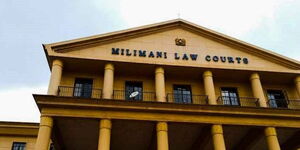Nairobi County government has identified Kibra, Mathare, Njiru and Ruai among 436 hotspots prone to flooding ahead of the upcoming El Nino rains.
Other areas include settlements along Nairobi River, Mukuru, Waruku in Kileleshwa, which featured in the list largely because of having a history of experienced flooding in the past.
The revelations were made during a consultative meeting with the National Government and representatives from humanitarian and development partners.
Speaking to the press on Wednesday, Nairobi's Chief Officer for Disaster Management and Coordination, Bramwel Simiyu, announced plans for evacuating these areas and establishing temporary shelters as alternative measures.
In addition, the county government announced that it will sensitize the population residing in the mentioned areas about the appropriate measures to take during flooding.
He also highlighted the disaster response team put together to address the matter is properly structured where designated officers have been tasked with responding to different emerging issues during the El Nino period.
He added that the key to success with the Nairobi County Marshall Plan will be distributing resources to each sub-county, according to each area's needs and priorities.
"We will have officers to handle specific tasks, be they logistics, emergency response, thematic response and others. We have come up with a structured plan between the National and County government that will focus on the humanitarian response aspect," Simiyu said.
"What we've done is to cascade our response to the sub-counties and the reason we had these meetings with the joint DCCs and sub county admins is so that we can harmonise the structure at the sub-county level and to localise the marshall plan in the sub-counties."
According to Simiyu, Nairobi county government is working with the Meteorological department to have early warning systems in place to prevent loss of lives or property.
"At close to 200,000 people are at risk of being displaced so part of our mitigation plan is that we're deploying our environment workers to continuously unclog the blocked drainages. We have also tasked our sub-county teams to map out their priorities and resource requirements and come up with a budget," he added.
The county government has recently recruited 3,500 youths to form the Green Nairobi team.
Their primary responsibilities include unclogging and cleaning drainages, as well as collecting garbage to maintain the cleanliness of the city.
Nairobi Governor Johnson Sakaja has emphasized that this initiative is vital for ensuring the uninterrupted flow of water and preventing blockages and flood risks.
"We have an emergency number that you will be required to call in case of emergencies. It is fully fledged emergency call center," Sakaja said during a tour at Uhuru Park.












